“Doing nothing is not an option”
Since the start of the year, the Workstream 4 of the rETHink project has focused intensively on the organisation of our academic departments. Jan Vermant and Zeljko Medved, the operative co-leads of Workstream 4, talk about the most important findings of the analysis phase and the next steps.
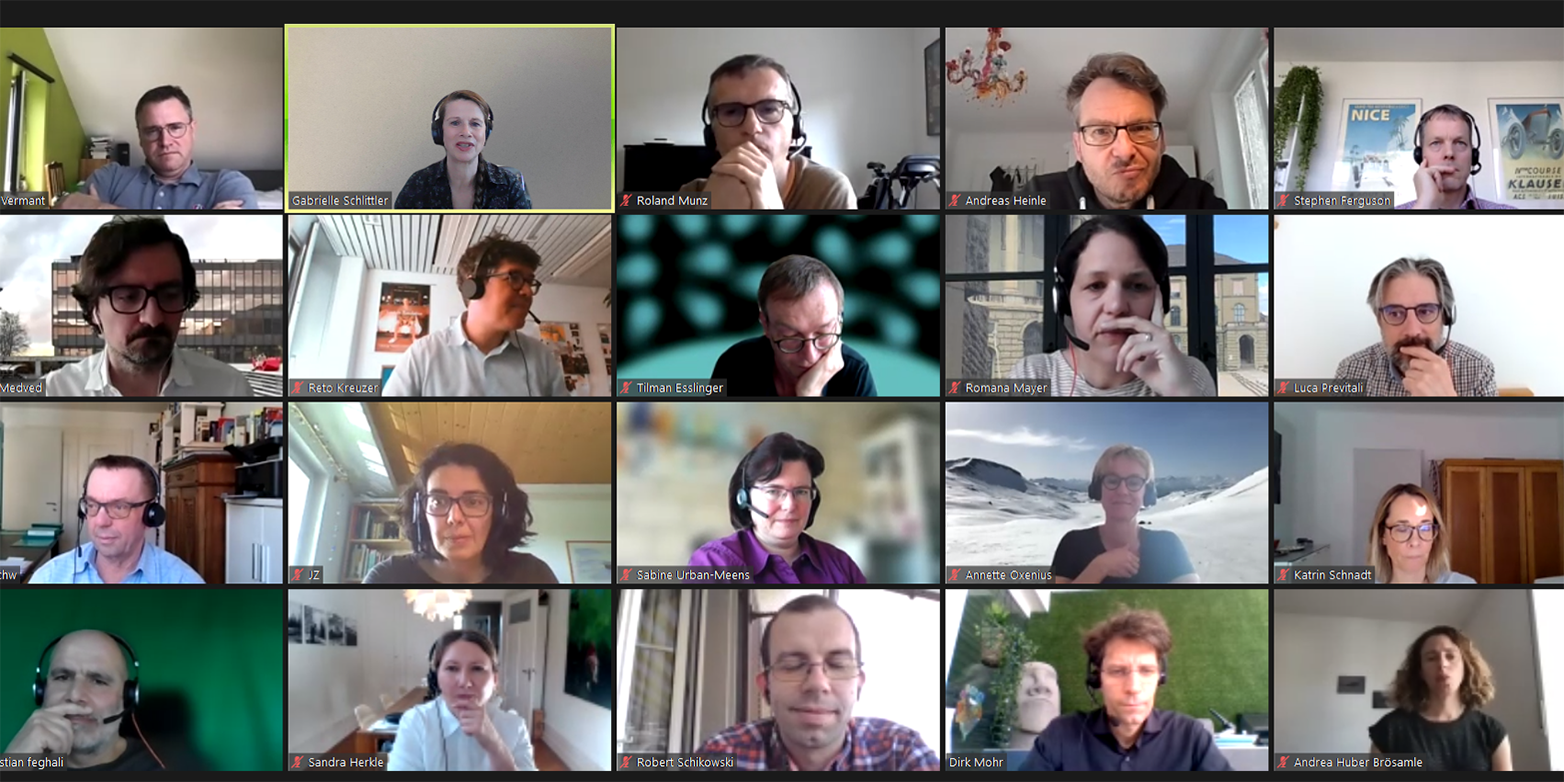
Jan and Zeljko, did you volunteer for the rETHink project, or were you approached first?
Zeljko: First I received an enquiry, and then I volunteered – so “yes” on both counts!
Jan: It was the same with me. I was asked nicely, and who can say no to that?
(both laugh)
Zeljko: But joking aside – we were delighted to be asked to participate.
Did you also have a few reservations?
Jan: I had to think it over initially. When I received the enquiry I was still head of department. My workload, combined with the onset of coronavirus, was pretty demanding and I was already looking forward to getting back to a more normal work schedule. Although I was well aware that my involvement in rETHink would be equally time consuming, I still felt I should answer the call of duty.
Zeljko: I was actually on holiday when Ueli Weidmann contacted me. So I was a bit more relaxed about the consequences for my workload, and quickly agreed to sign up. But I was certainly aware of the potential time pressures and discussed this with the head of department. He supported my decision in the full knowledge that it could potentially leave me with less time to devote to other tasks.
What’s your motivation for becoming involved in rETHink?
Jan: In my capacity as department head, I was very conscious of the pressures of this role. I talked a lot with colleagues about ways of making this position more efficient. Around this time, our president, Joël Mesot, launched the initiative and Ueli approached me. ETH is such a unique and wonderful place. Improving it even further and preserving all its positive aspects is my main motivation for working on the project.
Zeljko: I’ve been working at ETH for over 10 years now, but before that I held a similar post at another university, so I can draw comparisons. I’ve always been impressed by ETH’s pragmatic approach to things once their importance has been appreciated. At the same time, it came as quite a shock to learn that the personal signature of department heads is required on countless forms, such as orders for new chairs. This is still the way we are obliged to work in some cases. In recent years, my department has lived through a couple of crises which on occasion caused severe disruption. That’s certainly made us stronger and better, but it’s also highlighted the need for change – to further improve the positive aspects. Now Joël Mesot’s initiative gives us all the opportunity to work together to do just that.
The core team comprises around 20 people from different academic departments and ETH entities. What is it like working together?
Jan: Really great. I already knew a few people – from the Research Commission, for example. It’s exciting to have different perspectives represented in the team. Something that constantly bowls me over, for example, is ETH members’ incredible commitment, no matter where they work. I don’t know how we manage to do it – but it’s vital we preserve this trait. Sometimes it takes a little time to understand other people’s perspective, but exchanging views is such an enriching experience. To be honest, I was worried there might be some polarisation between the viewpoints of members from academic departments and central administrative units. In fact, we found everyone shares the same concerns, and together we arrived at the same conclusions. That was fantastic. But I am well aware that finding a solution will not always be so straightforward.
Zeljko: The core team communicates and works on an equal footing, and our members have a good understanding of what makes ETH tick. It’s always just a personal view, but there’s never just one perspective.
How important is collaboration in the area of external project management?
Jan: Extremely important. Gaby (Gabrielle Schlittler from Vianova GmbH) has so much energy and experience and does a phenomenal job. She has already supported many organisations and businesses through development projects and was quick to realise that ETH is different. Our collaboration is smooth and very professional.
Zeljko: Gaby’s support is crucial for the success of the project. Although we have many strengths, change management is not our core business. Gaby shows great sensitivity regarding our particular environment. Without her, our work would be impossible.
You’re obviously putting your heart and soul into rETHink, but how much actual time are you devoting to the project, on average?
Jan: Ummm…. (thinks for a bit) At the moment I’m investing about one day a week.
Zeljko: Same for me.
How have you organised your time so you can still carry out your main work duties?
Jan: I stepped down as department head in February and passed on the position to Pietro Gambardella. Since then, I’ve continued to support him as deputy head. Some colleagues have taken on a few of my usual duties for the department, and I am extremely grateful to them. Aside from that, I’ve put several other things on hold for the time being.
Zeljko: For me, this is exactly the type of issue rETHink addresses. Special tasks come up for me and the professorships all the time, whether it’s rETHink or the departmental evaluations every seven years, for example. That’s often very demanding and makes it difficult to plan the time and effort required. There’s also the question of how much more people can actually take on. All our meetings are currently conducted via Zoom, which fortunately is efficient and saves time. Ultimately, it’s a question of attitude and motivation.
The analysis phase is very well supported. You have received input from the Executive Board, your own core team and from Workstream 2 (Professorships). On top of that, you and members of your core team have had around 26 online discussions. Apart from the concrete results: what have you got from the 60 hours of talks?
Jan: There are three things I’d like to mention. First, the many tasks our departments are expected to perform, and how efficiently they are doing so with a truly lean organisation. That’s a very impressive feat – and something our external expert Gaby also remarked upon. Second, we have watched the pressure on departments steadily grow. We don’t have time for new tasks and self-reflection. Third, the enormous dedication, as well as pride, that can be felt in every department. This energy is amazing. And of course the interviews with our students and their participation and input, especially in the area of teaching. They have a remarkably good grasp of how the university functions and are very empathetic. I thought these conversations would produce the most criticism, but in the end students showed the most enthusiasm, and the positives outweighed the negatives.
Zeljko: I was particularly impressed by the diversity of viewpoints. How every department sees itself as special – and presumably also is in many respects. We talked to a huge variety of people with an incredibly broad range of perspectives. The scientific staff especially said they would like to see even more made of this on the level of teaching, research and organisation in equal measure.
Did you find it restrictive to conduct meetings via Zoom only?
Jan: Zoom was not a major obstacle – in fact, it made proceedings very efficient. Face-to-face meetings would obviously have been better when discussing tricky issues: it would have made it easier to read others’ body language, for example. We’d definitely prefer more meetings in person when discussing the next stage in the process and clarifying specific details.
Did you approach your discussions with the academic departments with concrete expectations – or perhaps even a degree of scepticism?
Jan: Yes, I’d say there were a combination of different factors. Certainly there was concern that rETHink could involve change – possibly transformation. At the same time, our in-depth discussions gave a clear idea of where improvements are needed. Positive examples of best practice also show that we can learn from each other, and where obvious quick wins can be found. During the discussions we also identified a series of minor problems, which we immediately passed on to the staff units to resolve.
Zeljko: Any change process usually encounters a certain degree of scepticism, mainly due to uncertainty about the consequences for one’s personal situation. We approached the academic departments with lots of questions. Naturally this gives rise to expectations. Now it’s up to us to show what can be gained – and perhaps also lost – through rETHink. We mustn’t shy away from this discussion. We are here to understand, learn and reflect. Working with all parties involved, we need to identify where action is necessary. If we didn’t encounter some scepticism about the process as a whole, we would definitely be doing something wrong.
The results of the analysis phase have highlighted an area of tension: the departments are operating with a high level of efficiency, despite dynamic growth and greater external expectations, but with the same organisation in most cases. The structures have never been developed further, which puts extra pressure on the departments and staff, with negative consequences for governance and modernisation. Were you surprised by this outcome?
Zeljko: The results basically confirm what most of us already experience from time to time. Personally, I have no first-hand experience of change projects at ETH, but doubts about the implementation of results are inherent in change processes. All of us – especially the Executive Board – share a big responsibility to ensure action is ultimately taken.
Jan: Society’s expectations about the way the university is controlled and held responsible have changed dramatically. This is currently the biggest driver for change at ETH. The pressure is particularly strong at Executive Board level and filters down to the departments.
The Executive Board presented the results of the analysis phase at the end of April. How did it go?
Jan: Very well. Overall there were no major surprises for the Executive Board, apart from one aspect: the current interaction between the Board and academic departments, and the changes necessary in this regard. The president in particular was surprised by this result, as in the past he consistently made an effort to engage more with the departments and foster dialogue. We showed how in an organisation as big as ours, more time and space are simply needed for the departments and the Executive Board to engage in dialogue about important issues such as strategy, cross-department initiatives or expansion, but also to establish what sort of university we want to be. Generally speaking, we encountered a great deal of openness and interest.
Has the Executive Board made any changes to the areas of action, or the priorities set?
Zeljko: The Board has essentially heeded our request and only made minor adjustments. In fact, in their written feedback they even turned the surprise criticism about the quality of dialogue with departments into a productive force and immediately introduced a measure to convert it into a quick win. The details are still being worked out, but we’ll definitely find out more soon.
Were you worried the results might be called into question?
Zeljko: As the organisation of the entire analysis phase was predominantly bottom-up and the results were first-hand, calling them into question would have made no sense. But obviously there was still the issue of how these results would be interpreted. I admit we were a little on edge when we went along to the presentation.
Jan: It’s important to say here that the vice presidents and the project manager Katharina Poiger were closely involved in the workstreams. They clearly show a high level of engagement.
You have defined 12 areas of action. Three of these will be actively tackled this year. How did you make your selection?
Jan: We have distilled all the information from our discussions into a sizable document over 100 pages long. The decisive factor in the analysis was how frequently certain topics and aspects were mentioned. Points raised by many departments, or those extending beyond individual responsibilities and which therefore have a major influence on the overall organisation, were identified as topics requiring closer reflection on opportunities for improvement. Other topics that affect just one area, for example, will be forwarded directly to the staff unit responsible or given lower priority so that change is possible on different levels.
Zeljko: This is the filter rationale of the project and is linked to our mandate. We look at the entire institution and concentrate on the big picture, as well as on topics considered very urgent by many people.
The analysis shows: the self-image of departments is predominantly shaped by teaching. Is this identity currently under threat?
Jan: If you look at which processes run smoothly, it’s obvious the departments will do anything at any time to ensure that teaching goes well. Here we only uncovered a few problems, but encountered enormous enthusiasm. Research often diverges and ventures into marginal zones, but teaching is the core of what the discipline is all about. I was not involved in all the discussions, but the results of the analysis have confirmed my impression.
Zeljko: I also believe that teaching provides the strongest cohesive force.
One of the strengths identified was the lean departmental structures. Is that not precisely where the danger lies of having too many tasks and too much responsibility delegated to just a few people?
Zeljko: This was a key point in our discussions with the departments. Lean departmental structures basically have a positive connotation. However, it is becoming increasingly clear that our structures are outdated and no longer appropriate for an institution that over the past 20 years has almost doubled in size in certain areas. The departments need to engage in more self-reflection regarding this point. One of our top priorities will be to provide guideposts here for the departments. ETH rules and regulations often state that the department must do this or that. But what does “the department” actually refer to – who is responsible, who does what, how are responsibilities allocated across the three institutional levels (Executive Board/CAUs, departments, professorships)? And how lean must (or can) structures in fact be? That’s a huge – and important – area of action.
Jan: Precisely. We must perform this analysis. The decisions won’t be easy, but we should be open regarding the discussion about resources. There are currently a handful of key people in the departments. If one leaves or is off sick, problems can soon arise.
Professorship planning as a key strategic element features both in the strengths and the areas of action. How should that be interpreted?
Jan: The departments devote a lot of effort to planning professorships. However, some clarification still seems to be necessary regarding interaction and coordination at institutional level. It’s clear that the way in which the university and the departments carry out their planning and their appointments is a key success factor for the entire institution. Learning from each other and coordinating more closely on appointments could strengthen the institution as a whole.
Zeljko: Here we come back to our discussions with the Executive Board. The quality of dialogue between the departments and the Executive Board needs improvement, with greater coordination on content. By the way, our workstream has several topics that appear as strengths but which at the same time – on deeper analysis – reveal aspects requiring closer inspection. Our strengths occasionally also show up our weaknesses.
What conclusions did you draw from the discussions about the current leadership structure in the departments?
Jan: On the one hand, the model of just a two-year term of office as department head provides no continuity. The heavy workload of running the department adds to this burden. At the same time, this system fosters a culture of engagement, which is, in turn, positive. Employees who take on departmental tasks or the management of an institute subsequently feel much closer ties with departmental leadership and engage more actively to produce solutions. The discussions clearly identified the need for solutions that respect departmental autonomy. Everyone mentioned this point. It’s crucial for departments to remain autonomous, particularly in the areas of research and their own organisation. For certain processes, however, it may be extremely helpful to learn from each other. One thing is clear: we need to find the right balance between continuity and work volumes. And we need departmental leadership that really takes control and does not depend on individuals. The entire subject is complex and prone to controversy, and requires particular attention when searching for creative solutions.
Zeljko: All departments are strongly in favour of the basic governance system, with additional duties assumed on a voluntary basis (known as the “militia” principle), despite the challenges it brings. There are examples of best practice we could build on. For example: departmental managements comprising several members where continuity could be ensured through overlapping terms of office. We can work on the delegation of tasks and improving collegiality. But the underlying principle is firmly embedded.
There seem to be some topics on which the departments and the support functions in the central administrative units are not in agreement. Why is that?
Jan: There appears to be a lack of clarity about what the departments need and want from central services, and vice versa. The problems are mainly generic and recur in several areas. They are to do with expectations, limited resources and indistinct interfaces. During the course of our discussions, we identified six or seven different approaches in the way information and needs are currently reconciled. That’s not good. We need greater clarity and perhaps also consistency.
You’ve started phase two and are working on draft concepts for developing solutions. Can you tell us any more about that?
Jan: Given the differences between departments, it will be impossible to find a single solution, so three approaches will be necessary. The first involves the underlying principles and minimum standards for all departments. The second is a toolbox with models, solutions, suitable instruments and best practice examples. Here the function of educational developer comes to mind: some departments have adopted this role, while others have not. So we highlight what is already available and the best way to implement it. It’s then up to the departments to select and implement the optimal combination of measures to suit their further development. And then there are quick wins. These include, for example, processes that can be simplified or organised more efficiently. We want these three processes to make the departments fit for the future. This is a tricky undertaking, and the reason why we continue to work closely with the departments. We are also stepping up our collaboration with other workstreams, especially WS 2 (Professorships) and WS 5 (Central Administrative Units). As we are closely interconnected, an open exchange and discussion of ideas are vital.
When will the first package of solutions be implemented?
Zeljko: We need to distinguish between drafting and implementing solutions. rETHink does not make any decisions – these are assessed and adopted as part of the usual ETH decision-making process. The timetable is geared to Executive Board meetings. The pace of implementation will depend mainly on the decision on what should be implemented, and on which level. The first major outputs we are involved in are expected in April 2022. Any concerns that nothing will happen can be put to rest right now – doing nothing is not an option.
The original Executive Board project has grown into an ETH project involving around 600 employees so far. Does it still need such a broad level of support?
Jan: We are relying on collective intelligence and will continue to spread our net wide and draw on the expertise of others when producing possible solutions. This will require even more intensive work in the core team and working groups, while maintaining flexibility in their composition. All proposals must be broadly reflected and supported by all those who work at ETH. In other words, a participative process in the typical Swiss style!
Sandra Herkle is Head of Communication and Marketing at the Department of Computer Science and member of the Core team of Workstream 4: Academic Departments.
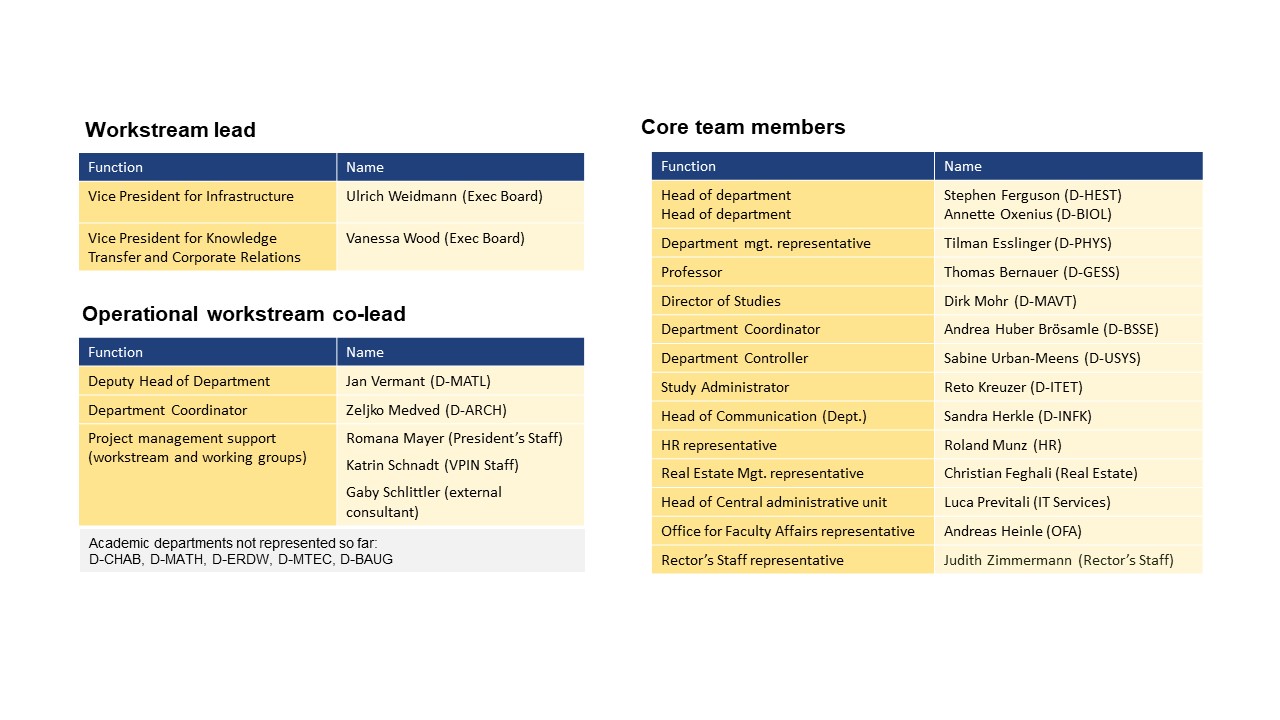
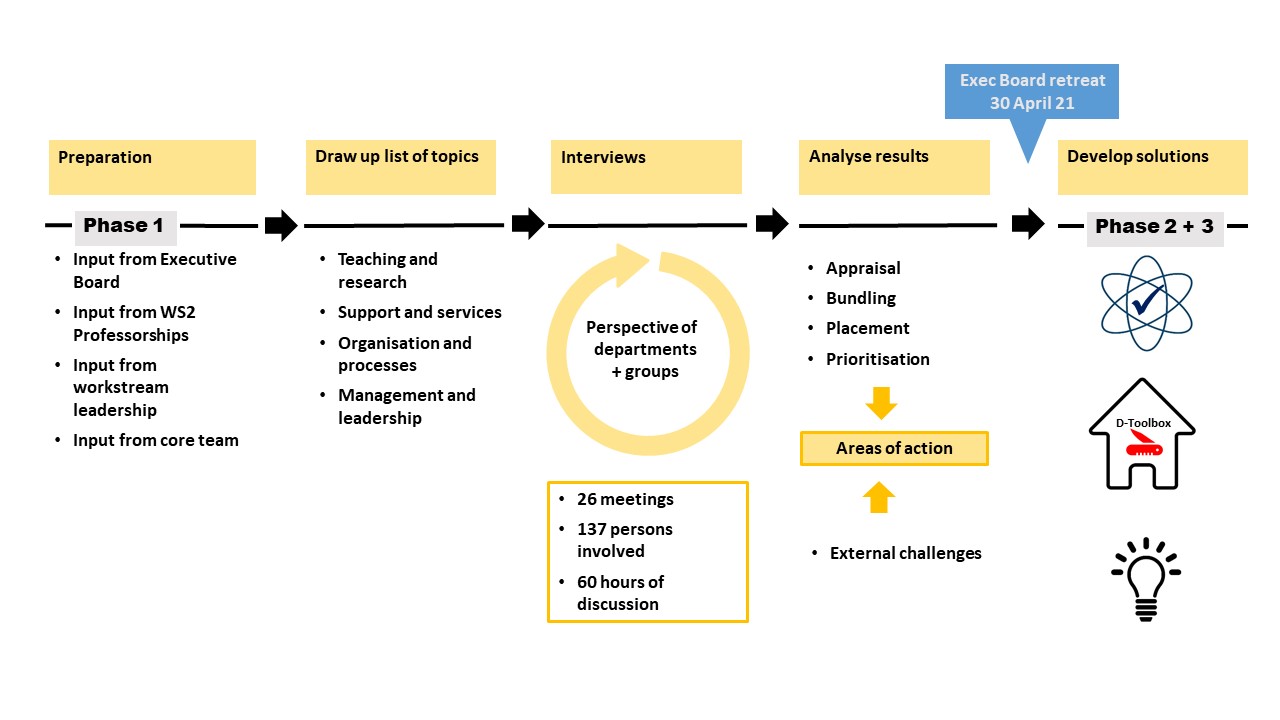
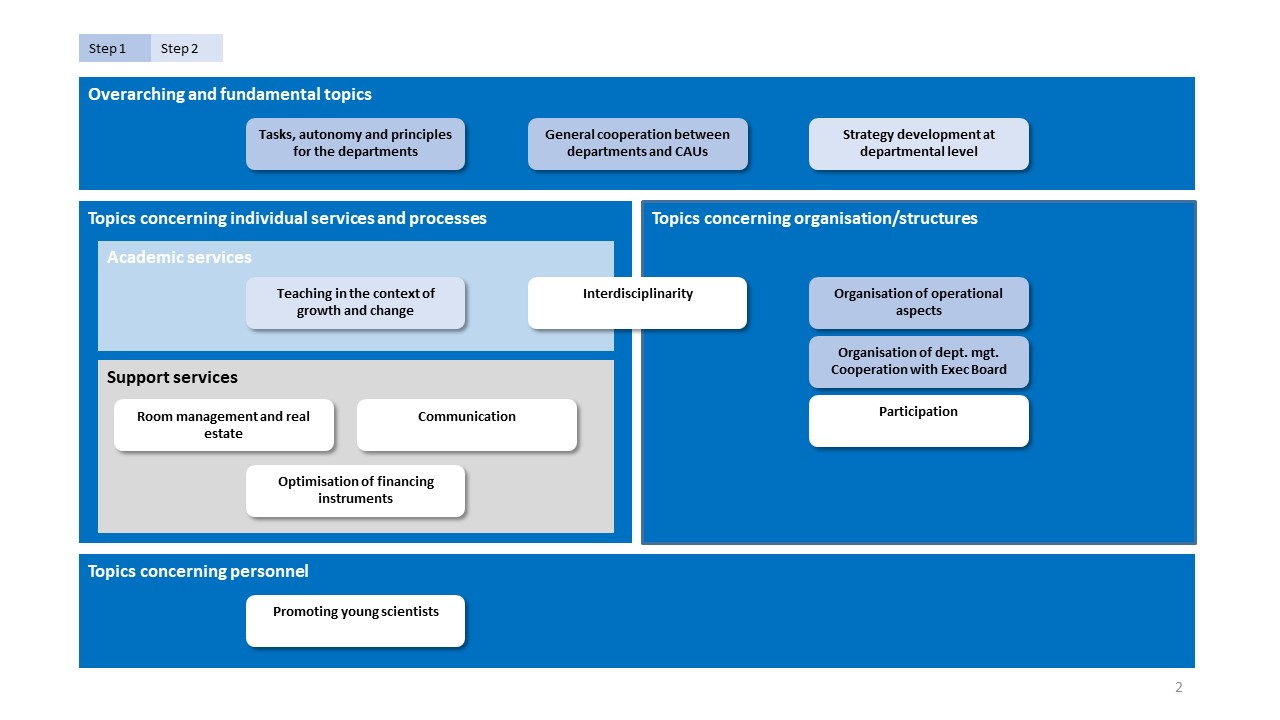
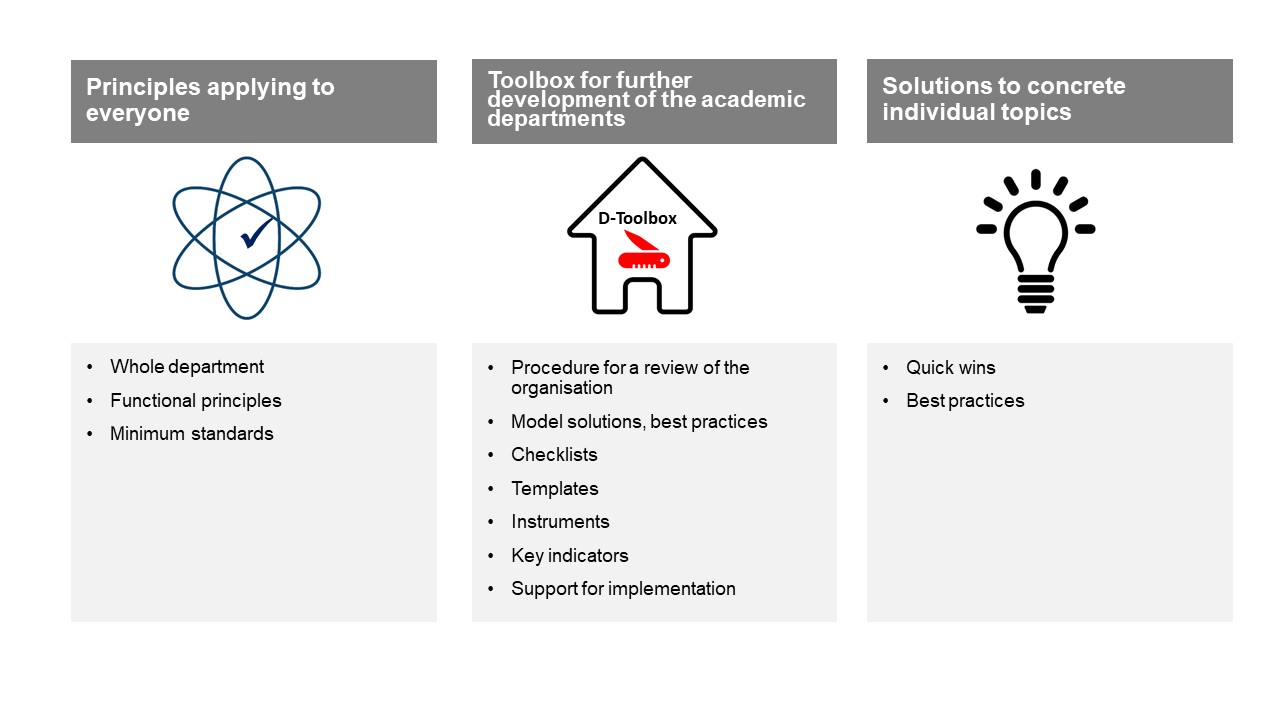
Comments
No comments yet